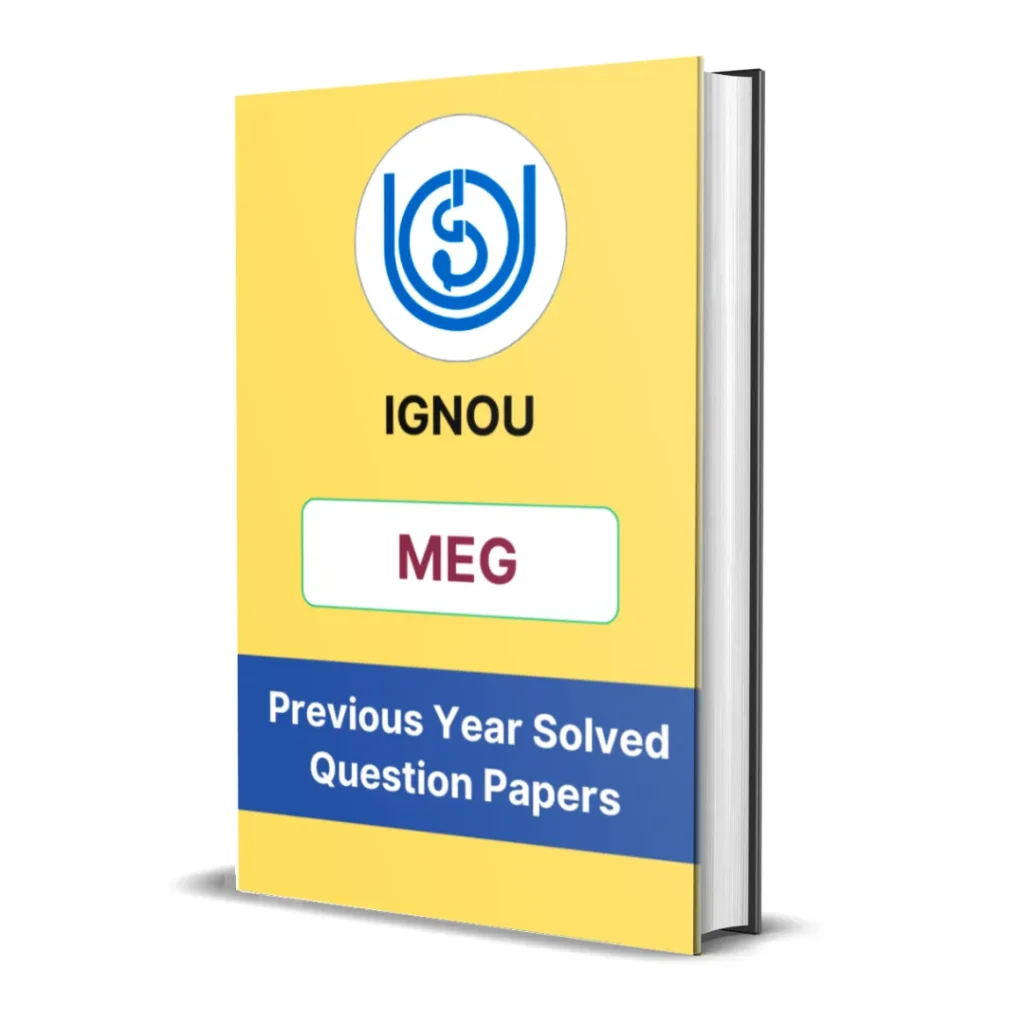MEG-04 Block 4 Summary | English Morphology
- Last Updated On August 13, 2025
Table of Contents
Here you will get the detailed summary of IGNOU MEG 4 Block 4 –English Morphology.
We have provided the summary of all units starting from unit 1 to unit 4.

Introduction
Block 4 of the IGNOU MEG-4 course, titled English Morphology, introduces students to the study of the internal structure of words and how new words are formed in English. Morphology, as a subfield of linguistics, helps explain how words are constructed from smaller units of meaning (morphemes) and the rules that govern their formation. This block is essential for understanding vocabulary development, grammar, and word usage in both spoken and written English.

Unit 1 – The Study of Words
This unit lays the foundational concepts of morphology, focusing on what constitutes a word and how words can be broken down into meaningful parts.
Key Concepts:
-
Morpheme: The smallest unit of meaning in a language. For example:
-
Unhappiness = un- (prefix) + happy (root) + -ness (suffix)
-
-
Types of morphemes:
-
Free morphemes: Can stand alone as words (e.g., book, run)
-
Bound morphemes: Cannot stand alone (e.g., -s, un-, -ed)
-
-
Root, Stem, and Affix:
-
Root: The core part of a word that carries the main meaning.
-
Stem: A root plus any derivational affixes.
-
Affix: Includes prefixes and suffixes added to roots or stems.
-
The unit also highlights inflectional vs derivational morphemes:
-
Inflectional: Changes grammatical function (e.g., talk → talked)
-
Derivational: Changes word meaning or category (e.g., kind → kindness)
This unit establishes a scientific basis for analyzing words systematically.

Unit 2 – Word-Formation in English-I
This unit focuses on the primary methods of word formation in English, starting with affixation and compounding.
Processes Covered:
-
Affixation:
-
Prefixation: Adding a prefix (e.g., dislike, unfair)
-
Suffixation: Adding a suffix (e.g., happiness, careless)
-
-
Compounding: Combining two or more words to form one word:
-
Examples: blackboard, toothpaste, website
-
Can be noun + noun, adjective + noun, etc.
-
-
Stress Patterns in Compounds:
-
Compounds usually carry the primary stress on the first element (e.g., BLACKboard vs black BOARD)
-
The unit explores how affixation and compounding expand vocabulary and allow speakers to create new words efficiently.
Unit 3 – Word-Formation in English-II
This unit examines other productive word-formation processes beyond affixation and compounding.
Included Processes:
-
Conversion (Zero Derivation):
-
A change in word class without changing the form. Example:
-
to Google (verb) from Google (noun)
-
-
-
Back-formation:
-
Removing a real or supposed affix to create a new word. Example:
-
edit from editor, burgle from burglar
-
-
-
Clipping:
-
Shortening a longer word. Example:
-
ad from advertisement, lab from laboratory
-
-
-
Blending:
-
Merging parts of two words. Example:
-
brunch (breakfast + lunch), smog (smoke + fog)
-
-
-
Acronyms and Initialisms:
-
Acronyms: Pronounced as words (e.g., NASA, RADAR)
-
Initialisms: Pronounced letter by letter (e.g., BBC, USA)
-
This unit highlights how creativity and economy influence language development and innovation in vocabulary.

Unit 4 – Word-Formation in English-III
The final unit explores less common but still important processes of word formation, and addresses morphological productivity and constraints.
Topics Discussed:
-
Reduplication:
-
Partial or full repetition of a word (e.g., go-go, boo-boo)—more common in informal or child language.
-
-
Borrowing:
-
Words borrowed from other languages (e.g., café from French, guru from Sanskrit).
-
-
Eponymy:
-
Words derived from proper names. Examples:
-
Sandwich (from the Earl of Sandwich), Diesel (from Rudolf Diesel)
-
-
-
Onomatopoeia:
-
Words that imitate natural sounds (e.g., buzz, clang, whisper)
-
-
Productivity:
-
Refers to how freely and frequently a word-formation process can be used to form new words.
-
Example: -ness and -ly are highly productive suffixes.
-
-
Constraints:
-
Morphological rules that restrict how or when certain processes can apply. Not all combinations are acceptable in English.
-
This unit rounds off the block by emphasizing the dynamic and rule-governed nature of word formation in English.